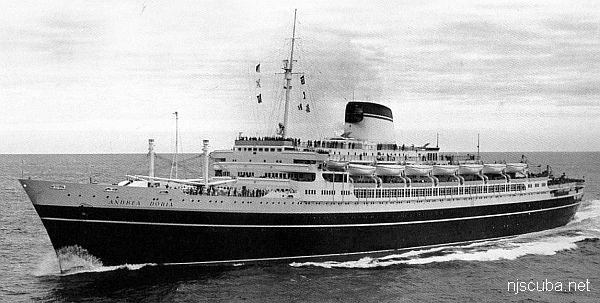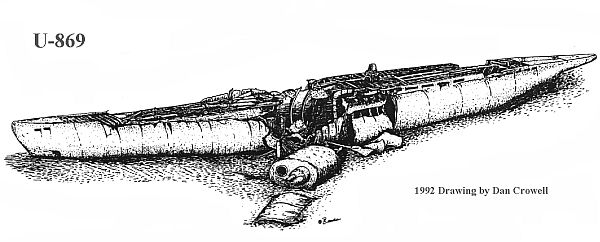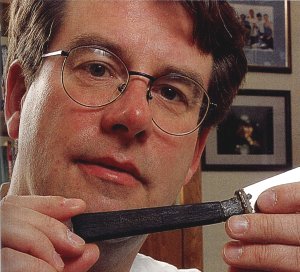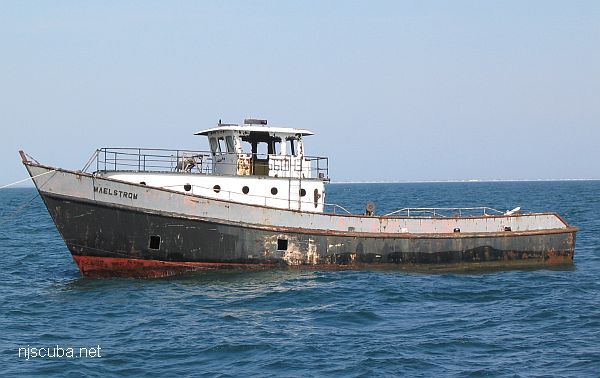Disco Ball
A Glittering Piece of History is Recovered From the Briny Deep
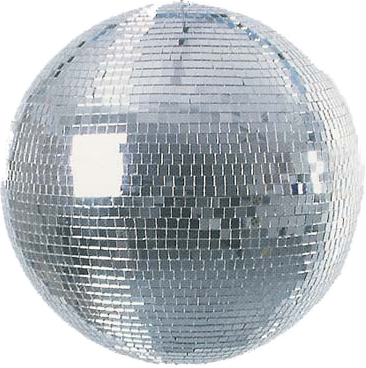
ASSOCIATED PEST
July 25, 2004
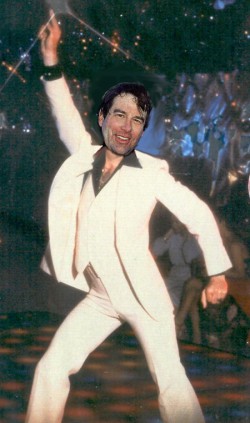
Deep Sea Defectives is proud to announce the recovery of the Andrea Doria's disco ball. World-famous deep-sea scuba diver John Chatterbox found the ball after mining hidden nuggets from blueprints and records of the vessel to determine its most likely location. He then did a hazardous penetration deep into the bowels of the wreck, which is lying on its side in crazy deep lotta water.
Right: Chatterbox "gets down" with some hot wreck-diving moves
"It is of the utmost importance that a diver not become disoriented inside the Andrea Doria" claims Chatterbox. "Because of the tilt of the wreck, the dance floor had actually become the wall, and the ceiling had become the ... er ... uh ... well anyway, once I found the DJ booth, I knew I was close to my goal. That's when all of my research and experience and skills and instincts really paid off."
Chatterbox's longtime Andrea Doria diving partner Richie Kooler interjected "Oh please, don't listen to him. He was just trying to find the bar again and got lucky. Hey, I could have found that stupid thing too. Jeez!"

Chatterbox's description of the actual find is no less enthralling: Assembling impressions of his surroundings from elbows, knees, neck, and even fins, the work site came to life like a painting in his imagination. Before he reached his mental meniscus, the unmistakable shape of the cowering mirrored orb revealed itself from the chaos. Shoehorning the wonder of his discovery into the reality centers of his brain, Chatterbox played movies in his mind while he shimmied like a neoprene Sasquatch to the crescendoing bongo drums of narcosis. Luckily, even after all that, he remembered to pick the ball up and take it with him, as he had learned under Kooler's subtle tutelage. *
Chatterbox and Kooler are the subjects of the current bestseller "Shallow Divers", by Robert Cursing, which details their quest to identify the mysterious "Yoo-Who" drink served aboard their favorite dive boat. They are also hosts of the popular "Deep Sea Defectives" television series on Nickelodeon.
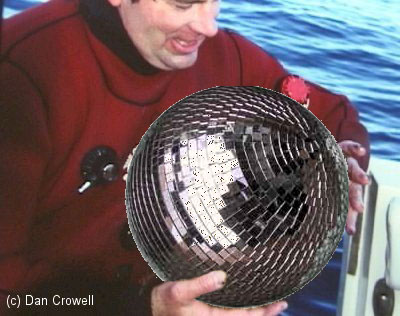
"The disco ball turned out to be in a remarkably good state of preservation" according to Chatterbox, who plans to install it in his living room. "Of course, this is only the Second Class disco ball" he continued. "The Italia Lines had three classes of discotheques, not counting the officers', and the crews. The real prize remains to be found in First Class."

When contacted for comment, veteran Doria diver Gary Genteel exclaimed "What! I thought I already got all the shiny stuff!" and hung up. Dan Crowall, captain of the expedition's vessel SNEEKER, was less cryptic when asked about the significance of the find: "This ball dates to the earliest period in the disco era, before everyone started hating it" he said, brushing away a tear.
The recovery of the Second Class disco ball, and the ongoing search for the First Class ball will be the subject of an upcoming television special, book, another TV special, a film, video game, and finally an animated cartoon series. John Travolta and Samuel L Jackson are reportedly in negotiations to play Chatterbox and Crowall. Tom Cruise has already signed to play Kooler.

Shallow Divers Movie Update
This just in:
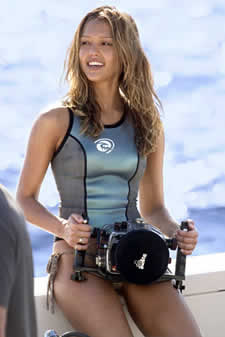
The movie adaptation of "Shallow Divers", based on the book by Robert Cursing, goes to production.
The film has been plagued by casting changes and script rewrites.
Producer Peter Weird: "It took a lot of work, but I think by focusing more on the romantic aspect of John and Richie's story, we've really broadened the audience appeal of the project."
In the film version, Jessica Alba will play a hard-bitten Los Angeles County lifeguard investigating corruption at a volleyball tournament, who's life is changed forever when a German u-boat washes up on the beach during the semi-finals.
When reached for comment, John Chatterbox said "Wow, that sounds way better than the original story! Jessica Alba, Mmmm!" Richie Kooler added "That's right, John. I'd definitely pay nine bucks to see that." Robert Cursing was speechless.
The project has also had its share of financial woes. Peter Weird: "The budget for sets and props was tight. There wasn't a lot for wardrobe either. Luckily, we didn't need much."
"Jessica took a big cut in pay to work on this film, while John and Richie waived their consulting fees entirely, and even volunteered to share her trailer."
"We saved money in other ways too. For example, in the u-boat scene, the actual submarine thing is rendered entirely in CGI, which saved a fortune on models."
Kenner Announces Shallow Divers Action Figures
Kenner has just announced a new line of Shallow Divers action figures, based on the hit book and movie of the same name. The first three 5" tall figures will be John Chatterbox, Richie Kooler, and Dan Crowall. Each figure will come with realistic dive gear and accessories.

The Chatterbox figure (pictured) will come with a single-80 oxygen tank ( removable underwater for extra adventure, ) disco ball, and leaky drysuit.
The Kooler figure will come with double 120s, stage bottles, upline, lift bag, light, knife, reel, goody bag with porthole and china, hammer, chisel, crowbar, hacksaw, blowtorch, shovel, ax, dynamite, and leaky drysuit.
The Crowall figure comes with Navy surplus rebreather, kitty litter, video camera, and polyester leisure suit.
In addition, each figure is programmed with a speech module. When you remove his regulator, the Chatterbox figure repeats such memorable lines from the movie as: "I think I have a leak in my drysuit" and "You better put that back, Richie" while the Kooler figure's exciting quips include "Well, John ...", "That's right, John ..." and "I think I have a leak in my drysuit." The Crowall figure repeats "The latest technology ... constant PO2 ... best mix at every depth ... extended bottom time ... etc etc" until the battery runs out.
All toys are certified lead-free, mostly waterproof and tub-safe for hours of fun. Ages 6-65.
This is a completely fictitious story. Any resemblance to places, events, persons, or best-selling books, living or dead, is purely coincidental. If you were believing it up to now, I would like to talk to you about buying a bridge in Brooklyn ...
* Shadow Divers: 30:2, 50:7, 87:1, 95:2, 100:3

